The Thug Case: How Captain Armstrong Earned a Promotion to Police Chief of Denver, Colorado
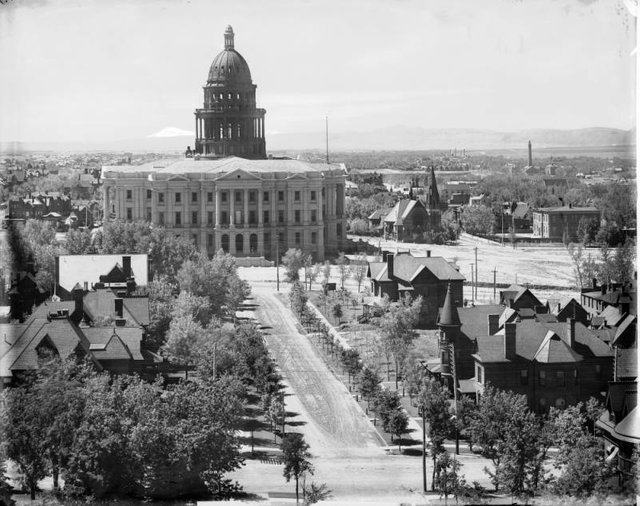
In the winter of 1900-1901, women in Denver, Colorado were terrorized by a very unusual serial killer. The victims were women walking the streets after dark, many of them returning from church or other worship services. Their attacker did not sexually assault or rob any of the women. He simply snuck up behind them on deserted streets and bashed in their heads with a very heavy object.
From August 1900 to February 1901, this man bludgeoned at least ten different women in the neighborhood of Capitol Hill in Denver. Some survived and others did not. I learned about this case from the book, Famous Crimes the World Forgot: Ten Vintage True Crime Stories Rescued From Obscurity by Jason Lucky Morrow and I have since done some additional research into Captain Armstrong and into subsequent attacks in the summer of 1901. If you are interested in crime history, I strongly recommend the Morrow book.
Captain Hamilton Armstrong, Chief of Detectives, was in charge of the investigation of these 1900-1901 attacks. After his handling of this case, which became known as the “Capitol Hill Thug”, “Capitol Hill Slugger”, or “The Thing” case, Armstrong earned a promotion to Chief of Police. At the time, this was the same office as Sheriff of the County, to which he also was appointed in 1902.
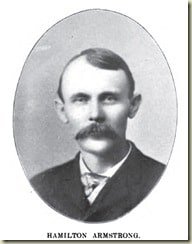
Hamilton Armstrong. Public Domain.
How did he achieve this promotion? Let’s take a look, beginning with the sequence of crimes that eventually were attributed to the Capitol Hill Thug. Here are brief descriptions of the dates and victims of the attacks up through February 1901.
The Victims, August 1900-February 1901
(1.) August 24, 1900: Elva Jessup, age 28. Jessup was on her way home from a service at the nearby synagogue. She was attacked a few doors down from her home when a man burst out from a dark enclosure and hit her in the head with a pipe or a club.
(2.) August 24, 1900: Lillian Bell (Martin), age 45: On the same night, the Thug struck again, this time fatally. Bell was walking in an alley about two minutes away from where the first attack occurred. She died from her injuries a few days later.
(3.) September 24, 1900: Emma Carlson, age 23: Carlson worked as a live-in maid and she was walking home from church in the evening when she heard something behind her. Turning, she caught a glimpse of the attacker as she was hit hard in the forehead by his club or pipe. She stumbled to a nearby house, was let inside, and related a description of her attacker before falling to the floor.
(4.) October 5, 1900: Annie McAtee, age 26: Twenty-three blocks away from the other attacks, the assailant struck McAtee as she was walking near her house. The Thug attracted much more notice after this crime, because the victim’s brother was a wealthy businessman who took his outrage to the newspapers.
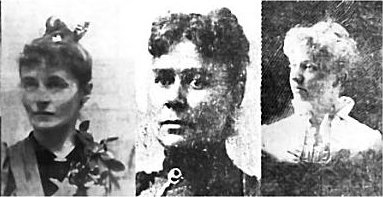
Some of the victims. Source: Public Domain, Montage by HistoricalCrimeDetective.com.
(5.) December 22, 1900: Mrs. Dewart Young, age unknown: Mrs. Young was attacked on the street near her home, sustaining a hit to the head which required medical treatment.
(6.) January 6, 1901: Julia Dohr, age 46: Dohr was walking to a building where she worked as a housekeeper. She was bashed in the head and thrown into a pit at a nearby construction site.
(7.) February 16, 1901: Marie Frazier, age unknown: Frazier had left her hairdresser’s and appeared at the doorstep of her parents’ house, her face smeared with blood and dirt, lapsing in and out of consciousness. She could not remember where she had been knocked down.
(8.) February 16, 1901: That same night, another attack may have been averted. Miss Everest, age 16, was walking home from her job at a dressmaking shop when she noticed that a man was following her. She stopped to let him pass. He stopped also. She walked fast, then ran, and he pursued her. She turned and he ran down an alley to cut her off, but she ducked into a house where she was taken in by the people there. Miss Everest provided the most detailed description yet of the attacker (which we’ll cover soon).
(9.) February 22, 1901: In the space of one hour, three women were attacked. Mary Short, age 40: She was found unconscious in a vacant lot and died later of a skull fracture.
(10.) February 22, 1901: Emma Johnson, age 30: On her way home from church, Johnson was attacked. She worked as a servant for a doctor who lived nearby and she managed to stumble to his home. From the three attacks that night, she was the only victim to survive.
(11.) February 22, 1901: Josephine Unternahrer, age 36: Not far from the previous attack, Unternahrer was hit hard behind her right ear, where she suffered a long gash that required surgery. She described her attacker, who had chased her before catching her. A few days later, she died from her injuries.
Three days later, the police went on a huge sweep of the neighborhood. They conducted a mass arrest of laborers, street people, boarding house residents, and just about anyone they could find on the edge of society. They detained many of these ‘usual suspects’ for an extended period of time without charges.
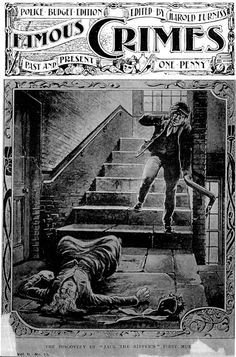
The descriptions of the attacker
One of the first victims, Emma Carlson, described the assailant as a small man with a very white complexion. Miss Everest, who escaped a possible attack, described him and later claimed to have seen the man again, while walking on the street with her sister during the daytime. A news reporter summarized her description as follows: “He was of medium height, with very light skin and a large drooping black mustache. His nose was quite prominent. He eyes were blue and wild. He wore a long gray Ulster and a crush hat.” The Capitol Hill Thug: The Police Are Hot on the Trail of the Alleged Terror, Aspen Daily Times (February 21, 1901).
An “Ulster” was an overcoat and a “crush hat” was one made of felt or some material that could be folded.
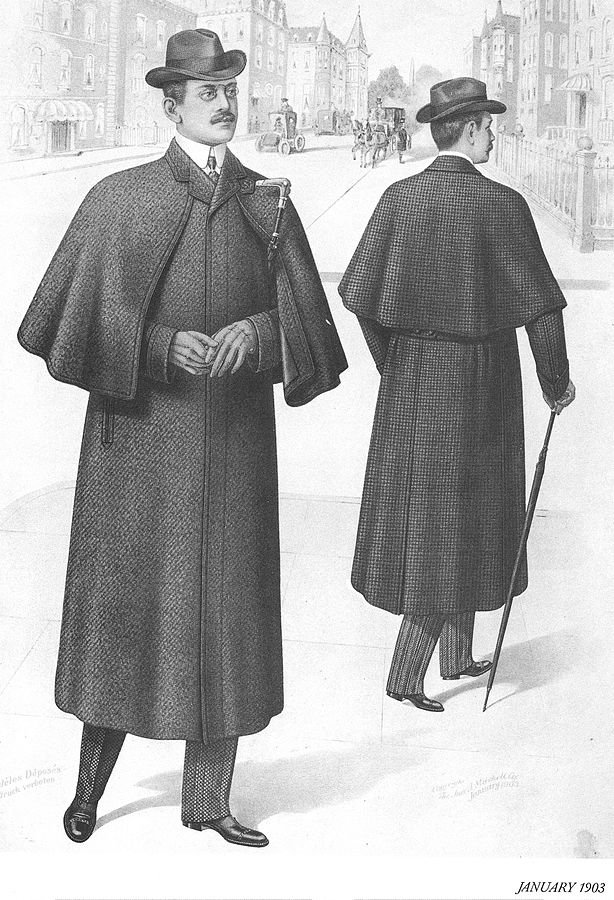
Here is a 1903 drawing of a man wearing an Ulster coat and a hat in the style of the time. Public Domain.
Josephine Unternahrer, who died from one of the triple attacks on the night of February 22, 1901, relayed a description before she passed away. She said the attacker had a medium sized build with a large black mustache and he wore a black crush hat pushed far back on his head.
There was another witness to an attack that night also. And according to one news report, that witness described the attacker as a man in a police uniform. This description was never investigated.
The investigation
Captain Armstrong did not get promoted to chief for nothing. Let’s look next at his police department’s investigation of the crimes.
The first three crimes went largely unnoticed. Was this because one victim was Jewish, another was a lowly maid, and the other died without the chance to explain what happened? Perhaps, but as author Jason Morrow pointed out in his book Famous Crimes the World Forgot, Denver in 1900-1901 was beset by a large number of muggings and street robberies. The first three attacks from the Capitol Hill Thug may simply have seemed like more of the same.
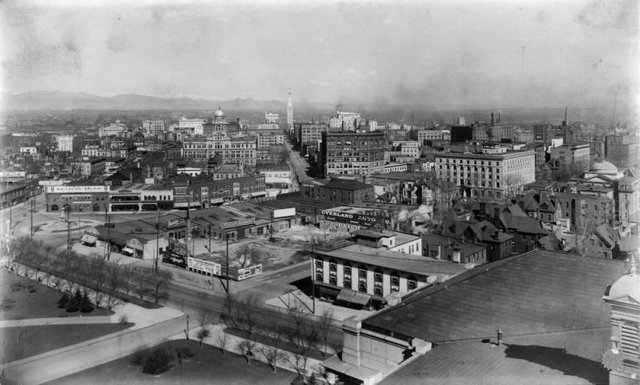
Denver’s Capitol Hill neighborhood in 1910. Public Domain.
According to an editorial in the Colorado Springs Gazette, the muggings were a “devilment that has run riot in Denver from the time the police department transferred from police duties to herding up dive keepers and inmates who will vote next November for carving out the wishes of the present state and city administration.” Mugging victims in Denver, the editorial suggested, “no longer dare to complain to police.” News Topics from Denver, Carnival of Crime Appears to Have Reached a Climax, Unmolested by Police, Colorado Springs Gazette (October 12, 1900).
In this environment, the police department had not investigated the first three Thug attacks enough to notice the pattern: somebody was bludgeoning women on dark streets, but not violating them or stealing any money.
But the fourth attack got everyone’s attention. Annie McAtee was from a well-known family and her brother was a prominent businessman. He got the newspapers and merchants in Denver all riled up and the family posted a $200 reward (almost $6000 in today’s dollars) for information leading to the Thug.
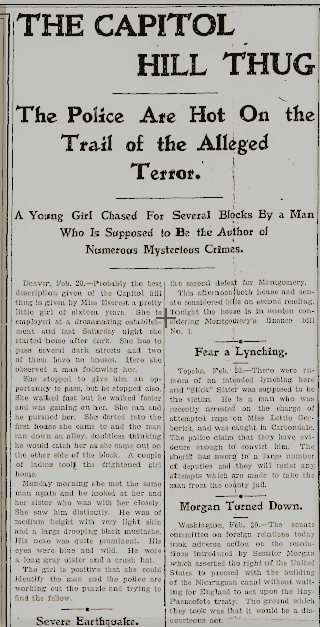
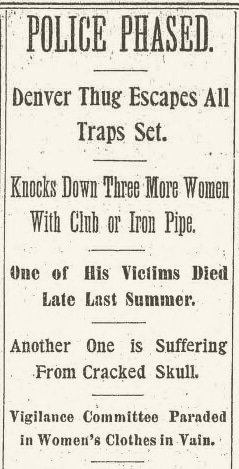
Rather than investigating effectively, the police department simply rounded up the usual suspects and kept them all in jail. In October, before the attacks continued, Captain Hamilton Armstrong told the newspapers that he had his man. It was Joseph Shaklee, who had been arrested in Greeley, Colorado. When asked why he was their suspect, the Captain said that “Shaklee is mentally unbalanced.”
He changed his mind a few weeks later, fingering David Pace on November 22. Pace, according to Armstrong, was “the scoundrel who has been guilty of numerous attacks on women”. Newspapers reported that Armstrong was very sure that Pace was the Thug, though no reasons were given.
From January on, the police went through another series of prime suspects. On January 8, Armstrong declared that the Thug was a man named Mr. Maryuisen. Then a robber named George Turner was arrested trying to steal from a woman. Being “undoubtedly crazy”, Turner was Armstrong’s best guess for the Thug. And there were others, too. Each time someone was arrested for street robbery, that man became Armstrong’s prime suspect.
The Aspen Tribune newspaper summed up the investigation. Each of Armstrong’s suspects “belongs to the great army of men who cannot tell where he was on a certain night and therefore falls under suspicion.” The editorial continued, “Several times the police have declared that they have at great expense secured some valuable clues. The clues were all they ever secured. They have chased phantoms and pursued shadows and allowed the real criminal to escape with exasperating regularity.” Police of Denver Will Suspect Every Person on Capitol Hill, Aspen Tribune (February 25, 1901).
As the Aspen Tribune remarked, “it is easier to find a thug than a policeman in Denver.” Criminal Section, Aspen Tribune (January 24, 1901).
Dozens of people were arrested on February 25, just after the night of the triple attacks. Captain Armstrong, the chief of detectives, announced that he had swept the neighborhood and would treat each of the men as suspects until they could prove they were not involved.
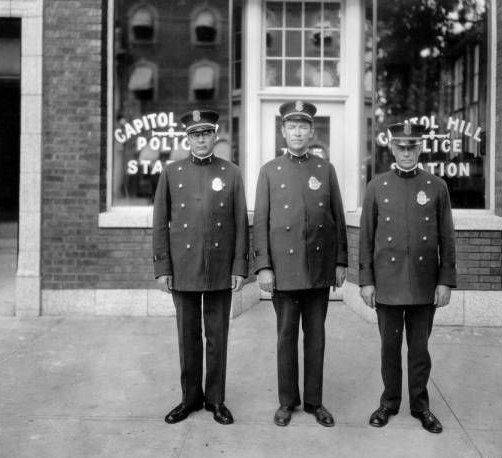
Denver Capitol Hill police sergeants in 1915. Pubic Domain.
The case against Al Cowan
One of the men arrested that day was Al Cowan. He was no more a suspect than anyone else the police had rounded up. He was held indefinitely with all of the other suspects. Police sources reported that he had been arrested at his boardinghouse, approximately one mile from the crimes, and that he only owned one suit, which did not match the witness descriptions.
The next day, a man named Albert Frederick came into the police surgeon’s clinic to have the dressing changed on a wound. While he waited in that doctor’s office, another man was there also and he was reading aloud from the newspaper. Once the man had finished reading the a part of the article that said there was now an additional $500 being added to the reward for information leading to the attacker, Frederick announced that he had witnessed one of the attacks. In fact, he had gotten a close-up view of the criminal.
Frederick’s story was that he was walking near where Mary Short was attacked. He had passed a woman on the street and shortly thereafter, he had heard her exclaim “Oh!” As Frederick turned, the attacker ran toward him and passed him on the street, brushing his coat against Frederick as he went by. Frederick then became scared and left the scene, worried that it was not safe to be there. Apparently, that is why he had not gone back to the victim to offer her any help at all, nor had he reported the crime or her injury to anyone.
The doctor asked Frederick to relay his story to the police. After questioning him, they took Frederick to the general lock-up that held fifteen men who had been arrested the day before. Frederick pointed to Al Cowan. That was the Capitol Hill Thug.
After being identified by Frederick, Cowan was interrogated ALONE by Captain Armstrong. Armstrong later explained to the media that Cowan had been arrested on the street, carrying a revolver, some cartridges, and “an iron bar about a foot in length” (even though multiple police sources said he had been arrested at his boardinghouse a mile away). According to Armstrong, Cowan had told him (in their 1-on-1 questioning session) that he hated women and felt persecuted by them. “He does not talk coherently and appears to be mentally unbalanced”, added Captain Armstrong. Plus, he fit the general witness descriptions of the attacker (minus the clothes, since Cowan’s one suit was no match for those descriptions).
Armstrong then told the newspapers that Cowan was the Capitol Hill Thug. Across the country, newspapers ran the headline “Hates All of Womankind.” The clothes did not match, there was a discrepancy with the weapon (was it a metal pipe or wooden club?), numerous residents of Cowan’s boardinghouse said that he had been there the night of the murders, there was no usable evidence uncovered at the boardinghouse, and the chief witness (Frederick) turned out to be a drug addict. But still, Armstrong stuck to his story.
Later, a woman named Mrs. E.J. Grove came forward as a witness and said she had seen the attacker. She was taken to see Cowan and she agreed that he was the Thug. Of course, she had seen his picture printed in the newspapers beforehand.
Al Cowan was kept in jail for a month before being charged with one of the murders. In fact, he was put in solitary confinement and lost 20 pounds in weight. During that time, additional suspects were arrested (such as Calvin Brown, who was held and questioned for three days) and each of them cleared.
Eventually, Cowan was put on trial for killing Mary Short. However, most of the police department’s evidence related to the murder of Josephine Unternahrer. When the prosecution tried to use it, the judge ruled the evidence inadmissible.
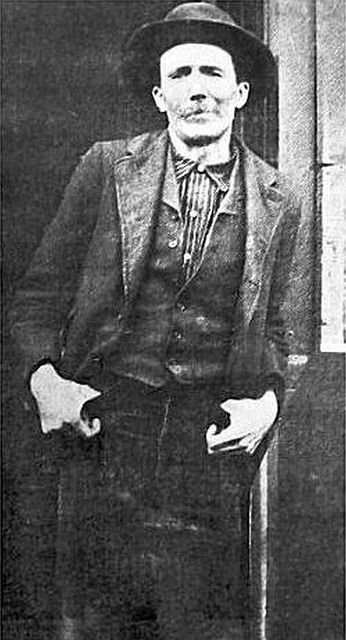
Al Cowan. Public Domain.
The trial was a mess, but it was a very entertaining saga which you can read about in the Famous Crimes the World Forgot book if you’d like to learn more. They had so little to go on that the prosecution’s case was meager and subject to plenty of doubts. The defense got the upper hand and turned the focus toward the prosecution’s chief witness, Frederick, as its straw man. Maybe he had committed the murder! He was at least as good a suspect as Cowan.
The aftermath
No one was convicted. There was another attack on June 25, 1901 that fit the profile, when 17-year old Celestine Coleman was hit in the head by a man who left a 2-foot long piece of gas pipe at the crime scene.
On the evening of June 26, a man named George Griffin tried to attack a woman named Mrs. Keldol. He attempted to flee, was shot and injured by police, and then they captured him. Amazingly, the police brought Griffin to Coleman’s hospital bedside. She was terrified when she awakened from sleeping to see him, suffering a severe “relapse”. Griffin, a local newspaper explained, “is semi-demented. Miss Coleman has failed to identify him as her assailant.” News of all kinds, Montezuma Journal (July 5, 1901).
Muggers seemed to be everywhere in Denver and having mental illness or dementia seemed to be strong evidence of guilt. Whoever the Thug had been, he stopped. The attacks did not continue beyond that summer and the world slowly forgot about this case.
The police commission must have forgotten about the bumbling investigation as well. So how did Captain Hamilton Armstrong ever put himself in position to be promoted as the next Chief of Police in Denver? Actually, he already had completed a term as Police Chief before 1900 and so it was not unusual that he might be given another chance. Apparently, Armstrong and his squad were very good at turning out the cemetery vote. They rounded up all the inmates and usual suspects, alive and dead, to vote for the political party machine that controlled Denver’s city government. And maybe that was his most important qualification for becoming the next police chief. Armstrong also worked hard to close down gambling and prostitution in the city while he was in office.
Moral of the story? No, I’m not going there. Don’t play politics; it’s always better to do the right thing. But politics is more important to some people than doing what’s right.
Sources:
(1) Famous Crimes the World Forgot: Ten Vintage True Crime Stories Rescued From Obscurity by Jason Lucky Morrow. Historical Crime Detective Books (2015). I highly recommend this book, which is available in both print and e-book format on Amazon. There is much more in the book about this case and full accounts of some other amazing historical crimes. The book draws upon many primary sources, mainly old newspaper articles, not all of which are referenced here. However, the author’s tale ends with the Cowan trial, while the Thug attacks continued for several more months.
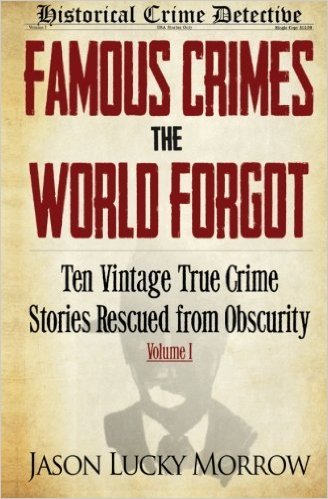
(2) Historical Dictionary of Law Enforcement, by Michael P. Roth. Greenwood Publishing Group (2001). Pages 91-92.
(3) Encyclopedia of Police Science, edited by William G. Bailey. Routledge Publishing (1995). Pages 201-202.
(4) National Police Journal, Volume VII, No. 4. (January 1921). Page 23.
(5) More on Captain Armstrong: http://gettingtheaxe.blogspot.com/2009/11/chief-armstrong-and-100-degrees-of.html
(6) Historical Inflation calculator: http://www.westegg.com/inflation/
(7) The Capitol Hill Thug: The Police Are Hot on the Trail of the Alleged Terror, Aspen Daily Times (February 21, 1901).
(8) Denver Again Terrorized by Murderous Slugger, Eagle County Blade (June 27, 1901).
(9) Police of Denver Will Suspect Every Person on Capitol Hill, Aspen Tribune (February 25, 1901).
(10) Criminal Section, Aspen Tribune (January 24, 1901).
(11) Last Night’s Dispatches, Aspen Tribune (June 28, 1901).
(12) News of all kinds, Montezuma Journal (July 5, 1901).
(13) Silver Cliff Rustler (July 3, 1901).
(14) News Topics from Denver, Carnival of Crime Appears to Have Reached a Climax, Unmolested by Police, Colorado Springs Gazette (October 12, 1900).
Thumbnail image: Public Domain.
It has remarkable similarities to the case of Jack the Ripper in London in the late 1880s. The police were no better in that case either and as we know the killer in that case was never found either.
I find it rather sad that, more often than not, the blame was put onto the mentally ill. In those days the mentally ill were demonized.
Of course there are some cases were a person with a mental illness can be violent, but it is less common than one would think.
Thank God we have come further these days as well as techniques in crime solving. Today modern profiling and algorithm mathematics would have solved this case pretty fast.
The person who did these crimes was no mental patient . This was a hate crime and as such smells of a sociopath. The mentally ill are not consistent nor calculated whereas psychopaths and sociopaths are very much in control of what they do.
The killer here was not a psychopath though for a psychopath would have more likely kidnapped the women or found a way to spent time with them in order to prolong the thrill. Psychopaths do not have much in the way of emotions, and so in order to feel alive, they need a thrill now and again.
A sociopath is basically a psychopath but with strong emotions and there is one emotion they have a lot of and that is hatred. And as such they do not have much patience and so their attacks are usually quick and over with fast.
A good example of a sociopath would be the Joker in the Batman film.
If the joker were true though, he would have had another identity pretending to me a normal citizen. And I believe this to be the case here in Denver all those years ago.
Just to be clear, I have extensive knowledge on Psychopathy and have been working on a book for over three years now, together with a renowned psychiatrist here in Norway who himself is an expert on the subject.
A really fascinating case to read, really enjoyed it @donkeypong
Good explanation of those terms, which are often confusing to many people. Yes, lots of similarities to Jack the Ripper, I agree. And rounding up the "mentally unbalanced" probably isn't the right way to find someone like that.
It's sad that "politics" and "the right thing" seem to have a restraining order against each other. They are clearly not allowed within 500 yards of each other... perhaps more.
To be fair, the investigation methods were crude back then and the pressure to solve this crime must have been unbelievably strong, but one would think that truth would play more of a part than it often does (certainly more than politics).
Great post! I love stuff like this. You just got a new follower. I hope you don't mind if I share this post. I live in Colorado.
Glad you enjoyed it.
Added this awesome post to my #history-trail for curation - not required maybe but still, awesome text @donkeypong
Thanks! Much appreciated.
my pleasure - you are a role model for people like me - keep on seeing as hero so we can learn from you!
Thanks, but I'm no hero. I just started here earlier than most of you did. Keep up the great work.
no need to thank
Nice post, good research. I appreciate people posting about history, especially history that is not well known.
Fascinating! I find myself more intrigued by the investigative procedure of those days rather than the crime itself; though this is truly one of those hidden gems lost in history.
Definitely. I've never been that interested in crimes themselves, but the mystery is always interesting. The human drama all around it, telling us so much about that time and place, is quite fascinating.
Agree.
Alphonse Bertillon is an important character in the history of criminal forensics. In those days, he contributed to the advancements of investigation techniques used by law enforcement. You might want to check about him.
https://en.wikipedia.org/wiki/Alphonse_Bertillon
That is too bad... wish they had finger print or dna testing back then...
What really gets me are the people like Frederick who want their fifteen minutes of fame so badly that they have no problem destroying the life of a potentially innocent man in order to get it. I just can't understand a mentality like that.
I appreciate what you put into this, research is time consuming, and I'm definitely going to check out that book, thanks for the recommendation!
Fascinating. I guess the other nine stories from Morrow's first volume must be as much captivating as this one.
That Captain Hamilton Armstrong was certainly no Pacifique Plante, who was a lawyer and policeman (the English version of his Wikipedia article ignores this important fact) fighting corruption in Montreal during the forties and fifties.
https://en.wikipedia.org/wiki/Pacifique_Plante